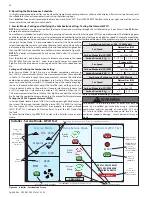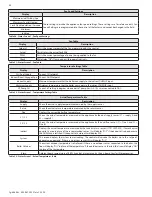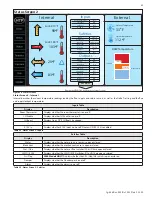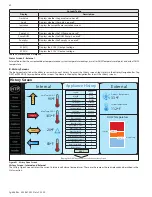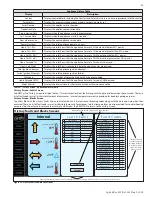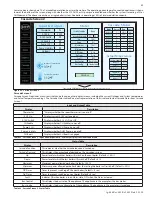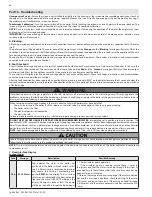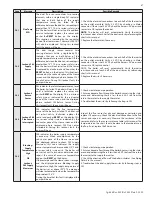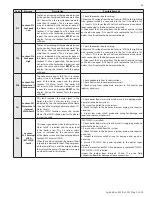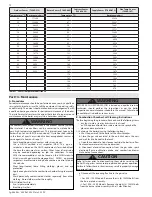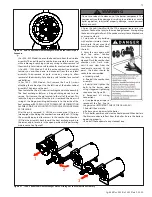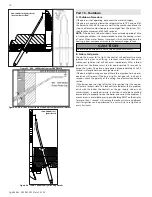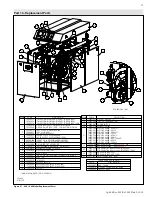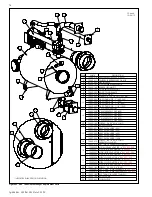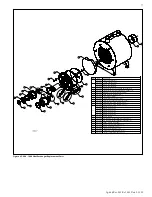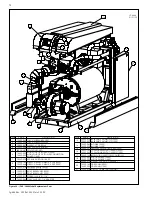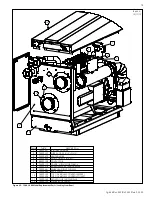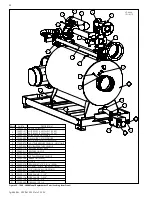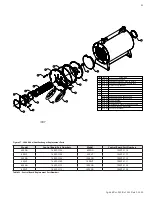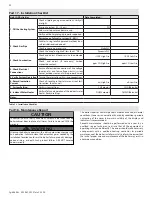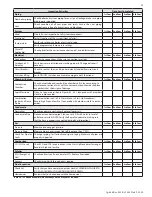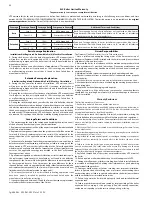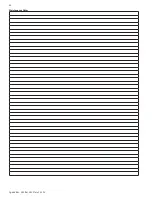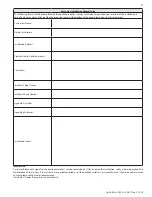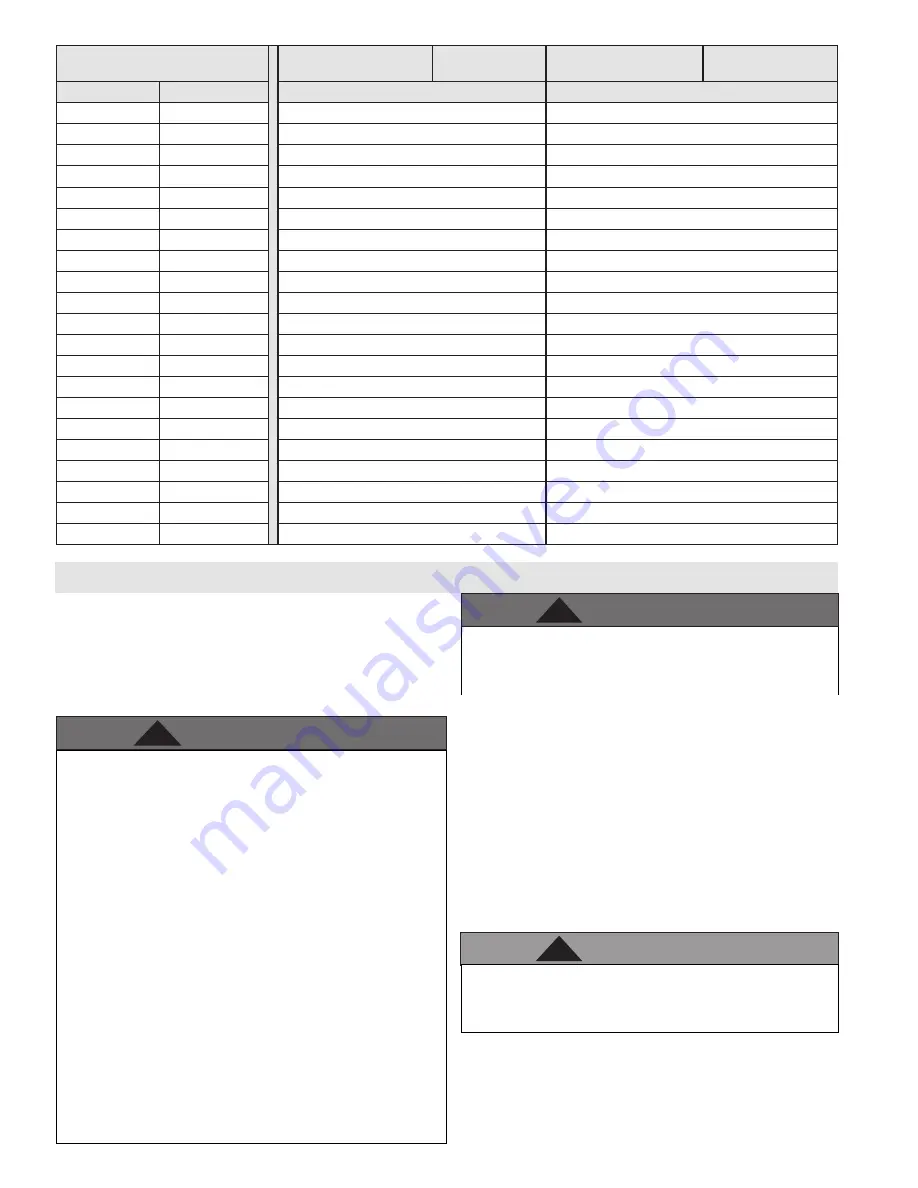
lp-666 Rev. 003 Rel. 001 Date 2.25.20
72
Outdoor Sensor (7250P-319)
Return Sensor (7100P-004)
Indirect Sensor
(7350P-325)
Supply Sensor (7700P-073)
Flue Temp. Sensor
(7550P-147)
Temperature (
o
F) Resistance (ohms)
Temperature (
o
F)
Resistance (ohms)
-22
171800
32
32624
-13
129800
41
25381
-4
98930
50
19897
5
76020
59
15711
14
58880
68
12493
23
45950
77
10000
32
36130
86
8056
41
28600
95
6530
50
22800
104
5324
59
18300
113
4365
68
14770
122
3599
77
12000
131
2982
86
9804
140
2483
95
8054
149
2079
104
6652
158
1748
113
5522
167
1476
176
1252
185
1066
194
912
203
782
212
674
Table 31 - Sensor Temperature Resistance
Part 14 - Maintenance
A. Procedures
Periodic maintenance should be performed once a year by a qualified
service technician to assure that all the equipment is operating safely
and efficiently. The owner should make necessary arrangements with
a qualified heating contractor for periodic maintenance of the boiler.
The installer must also inform the owner that a lack of proper care and
maintenance of the boiler may result in a hazardous condition.
BEFORE EACH HEATING SEASON a trained and qualified service
technician should perform the inspections as per the boiler
inspection and maintenance schedule in this manual. Failure to do
so could result in death or serious injury.
The combustion chamber insulation in this product contains ceramic
fiber material. Ceramic fibers can be converted to cristobalite in
very high temperature applications. The International Agency for
Research on Cancer (IARC) has concluded, “Crystalline silica inhaled
in the form of quartz or cristobalite from occupational sources is
carcinogenic to humans (Group 1).”
• Avoid breathing dust and contact with skin and eyes.
• Use a NIOSH certified dust respirator (N95). This type of
respirator is based on the OSHA requirements for cristobalite at
the time this document was written. Other types of respirators
may be needed depending on job site conditions. Current
NIOSH recommendations can be found on the NIOSH website:
http://www.cdc.gov/niosh/homepage.html. NIOSH approved
respirators, manufacturers, and phone numbers are also listed on
this website.
• Wear long-sleeved, loose fitting clothing, gloves, and eye
protection.
• Apply enough water to the combustion chamber lining to prevent
dust.
• Wash potentially contaminated clothes separately from other
clothing. Rinse clothes washer thoroughly.
NIOSH stated First Aid.
• Eye: Irrigate immediately.
• Breathing: Fresh air.
B. Combustion Chamber Coil Cleaning Instructions
*Before beginning this procedure, have on hand the following items:
• a nylon, stainless steel, or brass brush (not steel)
• an FDA approved liquid lime scale remover in a spray bottle
• gloves and eye protection
1. Shut down the boiler by using the following steps:
a. Shut the power off to the boiler at the circuit breaker.
b. Close the gas valve external to the unit. Shut down the unit,
and wait for it to be cool to the touch.
c. Open the condensate trap cleanout outside the boiler, so flow
from condensate reservoir can be observed.
d. Disconnect electrical connections from the gas valve, spark
electrode, flame rectification probe, and combustion blower.
Make note of connections.
WARNING
!
WARNING
!
CAUTION
!
Label all wires prior to disconnecting them when servicing the
boiler. Wiring errors can cause improper and dangerous operation.
Failure to follow these instructions may result in property damage
or personal injury.
e. Disconnect the incoming flex line to the gas valve.
f.
i. For 400 - 1000 Models: Remove the six (6) 10MM bolts from
the burner plate assembly.
ii. For 1500 - 2000 Models: Remove the eight (8) 10MM bolts
from the burner plate assembly with a 12mm Allen key.

